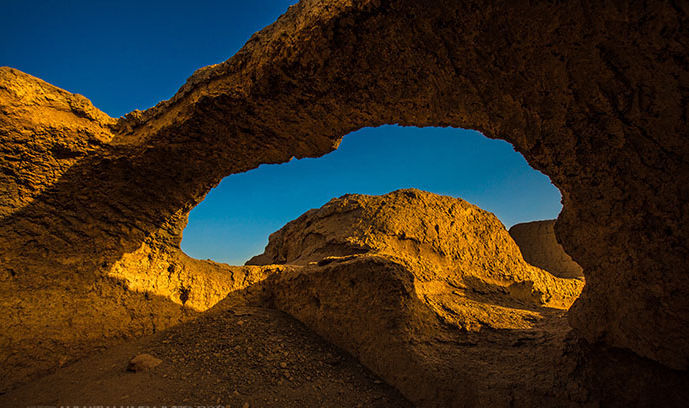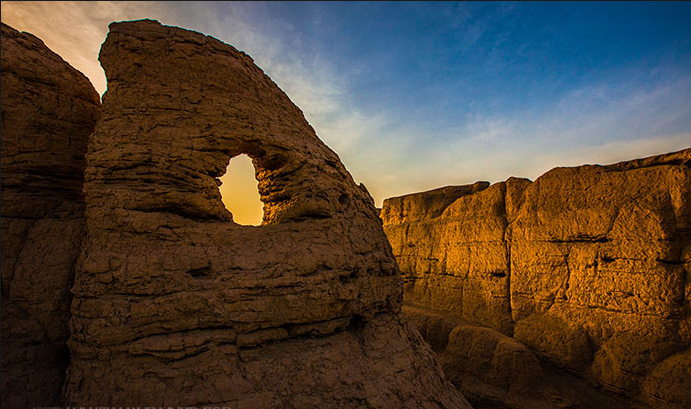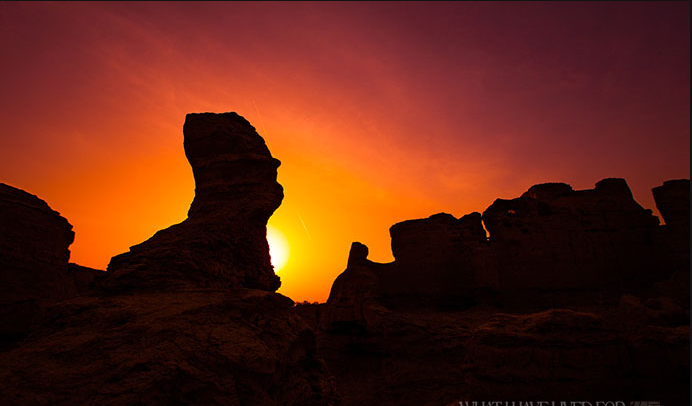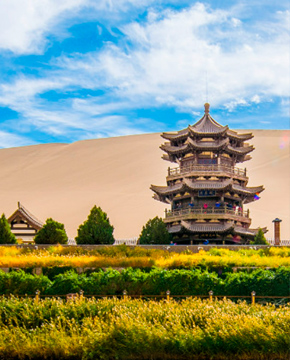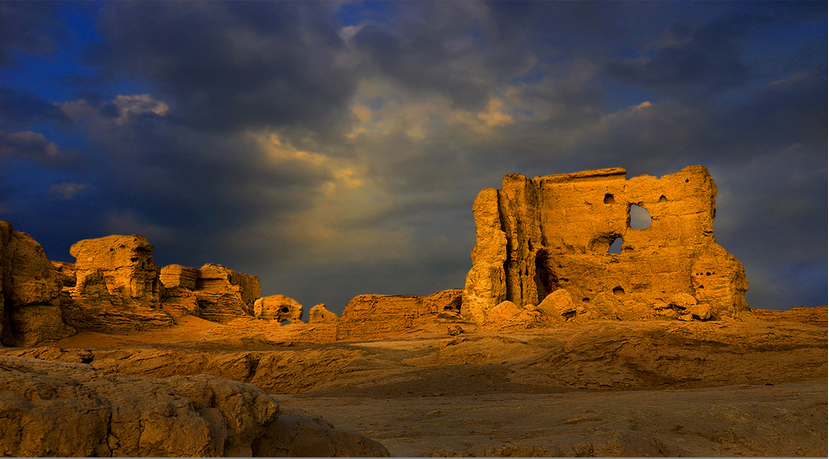
It is situated at Yarnaz Valley. 10 kilometers west to Turpan City. From the Western Han Dynasty to the Northern Wei Dynasty, Jiaohe was the capital city of Front Qiuci Kingdom. In 450 A.D., it was captured by Gaochang. And when it was in the time of Jushi Gaochang, Jiaohe was prefecture of the kingdom. In the Zhenguan Period of Tang Dynasty, a county administrative office was established in Jiaohe. In the 9th century, Jiaohe was a town of Xizhou Uigurs. At the end of Yuan Dynasty, Jiaohe was a part of Turpan and later the town was destroyed.
In 1961, the State Council of China authorized the ruins of ancient Jiaohe town as a major historical and cultural site under state protection.
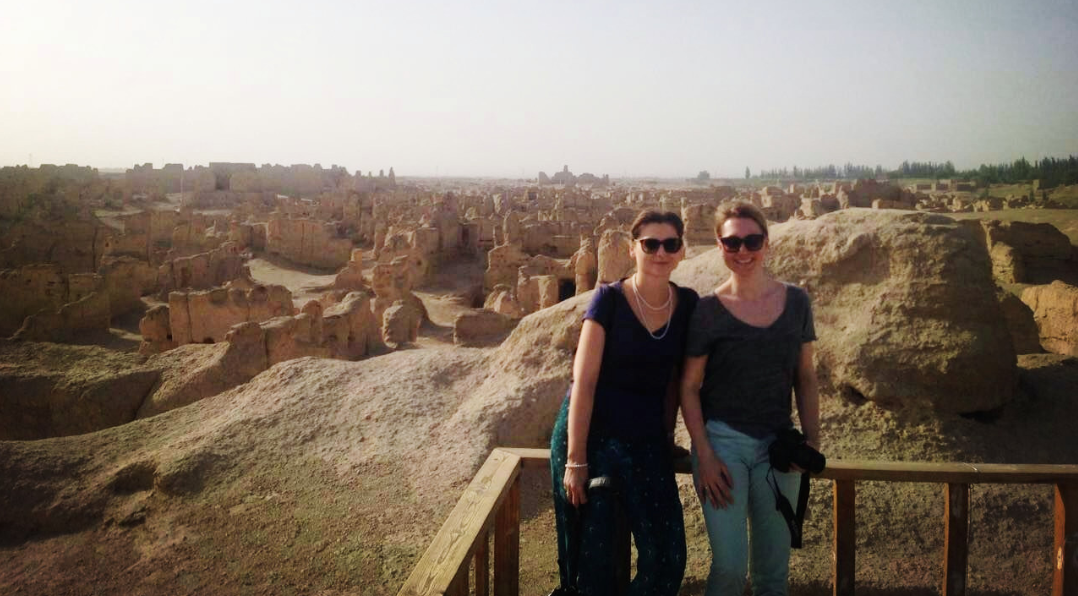
Yarnaz Valley is a river valley eroded by floods in the ancient times and in the middle part of the valley there was willow-leaf-shape platform, 16650 meters long and 300 meters wide. As the River divides into two parts flowing below the town, so the town was named after “Jiaohe” and due to the erosion of the river water, cliffs were formed, as high as 30 meters. The local people call it “Yarhotu”, meaning “Yartown”. There are pathways in the east side and south side, which extend down to the low place from the upper platform. On the walls there are two square-shape gate-frames to which gates were fixed. Out of the gates are the shaped down to the low ends of the platform. There are no wall round the edges of the buildings but a broken clay wall on the southwestern edge. The total building area amounts to about 220000 square meters. And there is a road in the middle the town, 300 meters long and 10 meters wide. This road divides the town into three parts. At the southern end of the road and eastern side there are lanes leading to the outside of the town and on both sides of the main road are high and thick clay walls but no windows and doors to the road. Many small lanes from the main road, horizontal or vertical in direction, divide the buildings into many blocks and gates of courtyards can be seen on the both sides of small lanes. The block on the northern part of the main road was a large temple area with many stupas in it and in the center of the block is a great stupa. There used to be a Buddha statue but nothing is left now. The eastern part of the southern block to the road were the ruins of office buildings and residential area, about 3000 square meters in area, the structure of the building is that of two-storey and stairs connect the two. Inside the wall there is only one square of the town. In the western part of the town are residential blocks with clear divisions of lanes and courtyards and handicraft workshops as well. It is a characteristic of the architecture that walls and bases that support houses were “dug out” from the clay ground. The floors between two-storey houses were supported by the rafters that were put into the holes into the clay walls. The roofs were clay-covered with few tiles. Li Shuo, a Tang poet, wrote a poem to describe the prosperity of Jiaohe of his time, two lines are : “Climbing hills day time to watch the beacon fire and water horses at dust in Jiaohe River.” But when Cheng Cheng, a Ming official who went to the Western Regions as an envoy and passed by Jiaohe described the ruins of Jiaohe in his poem : “Two branches of a sand river meet here and a strategic town was build on the water, it is dangerous with broken wall on the cliffs and I may ask how many years since it was ruined.” From his poem we can see when Chen Cheng was here , the town had been ruined and modern archaeologists came to a conclusion that the town was ruined in a great fire as they found there are burned traces in the most building. Jiaohe stands in Turpan for two thousand years and many building are preserved comparatively in good shape due to the dry climate and lack of water. From the 19th century, many foreign explorers came here to try their luck and since 1950's Chinese archaeologists have made systematic surveys in the ruins and they have made many important discoveries. Now, the Jiaohe ruins, as a rare ruined town in China, attract tourist from all over the world.
